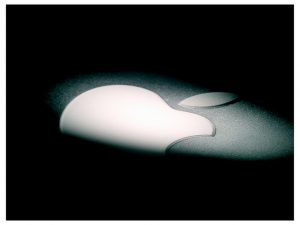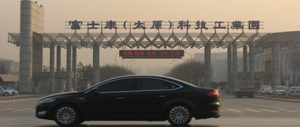US tech giant Apple said it wants to take a big bite out of the company’s large carbon footprint in China, where outsourced factories work around the clock to produce hundreds of millions of smartphones and tablets a year.
Following up an announcement last month that the company would invest in solar power, Apple CEO Tim Cook said on Monday that the company would encourage renewable energy projects at outsourced operations in China owned by Taiwanese electronics firms Foxconn and Pegatron.
Apple, the world’s biggest company by market cap, said last year it was responsible for emissions of 33 million tonnes of carbon dioxide equivalent in the 2013 financial year, much of which resulted from power demand from giant factories that make highly-desired items such as the iPhone, iPad and iWatch.
“We’ve set an example by greening our data centres, retail stores and corporate offices, and we’re ready to start leading the way toward reducing carbon emissions from manufacturing,” said Tim Cook in a press release.
He added: “This won’t happen overnight—in fact it will take years—but it’s important work that has to happen, and Apple is in a unique position to take the initiative toward this ambitious goal. It is a responsibility we accept. We are excited to work with leaders in our supply chain who want to be on the cutting edge of China’s green transformation.”
To make a meaningful dent in Apple’s carbon footprint, Foxconn and other companies in the supply chain will need to adopt low carbon energy on a much larger scale, no easy task in a country where around two-thirds of power generated is from coal.
Challenges
Foxconn’s vast manufacturing plants run continuously, meaning that intermittent supplies of wind and solar energy would have to be backed up by local energy storage, such as using powerful batteries, a technology that is advancing quickly but not yet at the scale to power Foxconn’s manufacturing plants.
Reliable use of renewable energy transported over long distances first requires further modernisation of China’s power grid.
Apple has already started to try and reduce its carbon footprint in China by dipping its toe into solar power, and the technology could also be used to power data centres and retail outlets.
Paper
The US tech company also announced a plan to go ‘paper-neutral’ in China by creating and protecting 1 million acres of sustainable forest that will supply Apple with packaging materials and reduce its overall ecological footprint.
For Apple, the company will likely need to be transparent on how it will ramp up the share of renewable energy and convince critics who point to previous secrecy surrounding its supply chain.
In the past few years, the company has had to deal with allegations that workers at its outsourced factories have been mistreated and that Apple’s suppliers have caused widespread pollution of water and soil through the extraction and production of rare earths used in items such as the iPhone.
For previous chinadialogue coverage on Apple’s supply chain, click here






